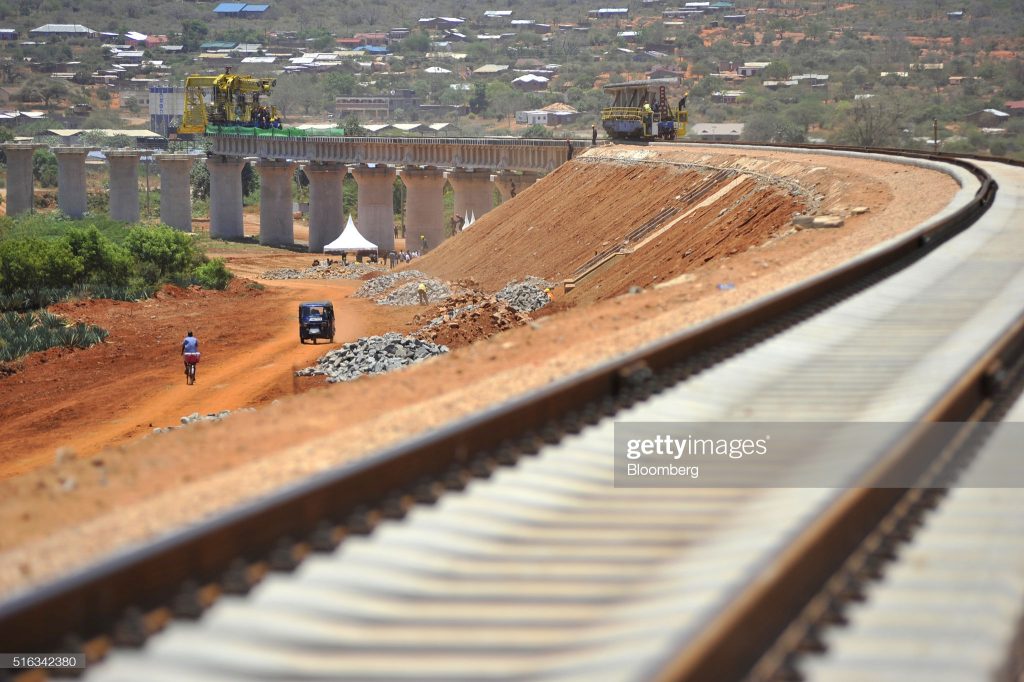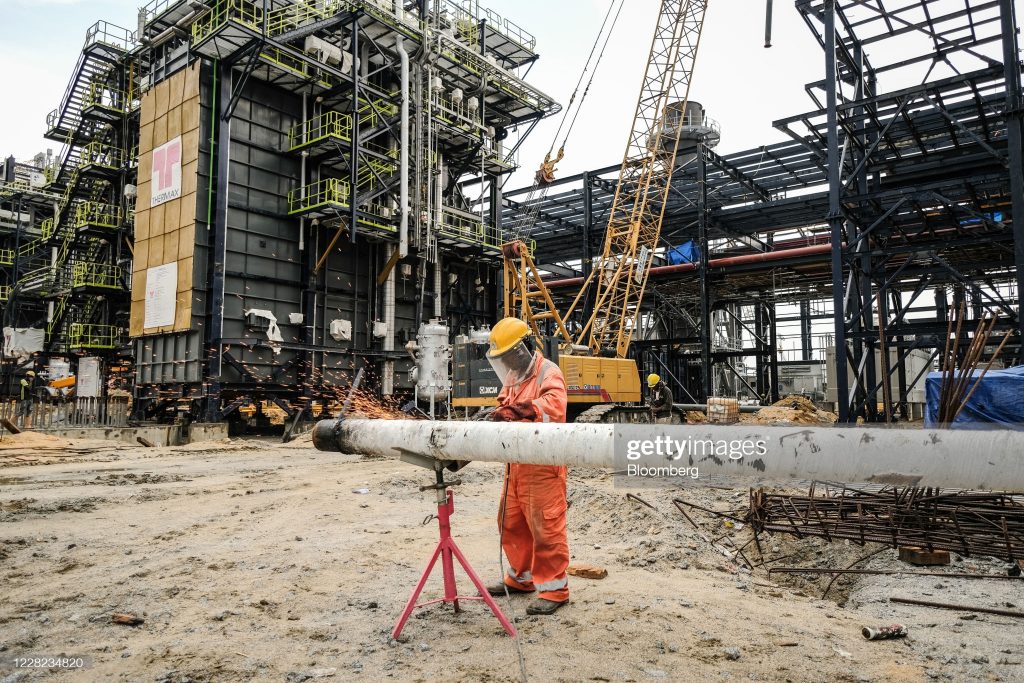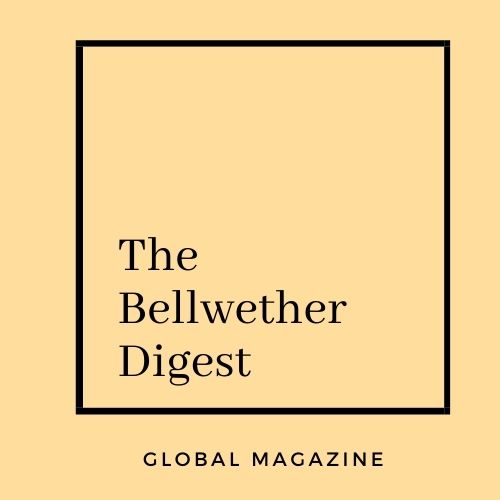It is 5 AM in 1974 a young girl aged 6 in rural Zvimba Zimbabwe (Then Rhodesia), wakes up to heat her bathing water on firewood to prepare for her first day in school. She then walks 5 kilometres to her nearest school just about privileged enough to have enough food to survive the school day. 47 years later if the same person’s granddaughter were to attend the same school, they would be little difference in how they would prepare and how much distance they would walk. A young girl of a similar age in 1974 in rural Milford in Pennsylvania took a warm shower and a bus on a tarred road to school. What are we talking about here? Infrastructure is what we are talking about. Electricity, transport, education, food security, and housing are all key pieces of infrastructure that dictate the quality of life and output of an economy.

Africa has a serious infrastructure deficit that requires a robust plan and effective implementation. Let me start with a summary of the current landscape of African infrastructure. Electricity: Currently 3 out of 5 people in Africa have access to power meaning that approximately 600 million do not have access to electricity. The current generation capacity is 170 Giga Watts (GW) and the required amount over the next 10 years accommodating population growth to reach 100% access rate is 225 GW. At an average of $1.20 per watt, this translates to $270 billion over the next 10 years. Transport: The first generation of African road and rail infrastructure in most countries was built for colonial extractive purposes. According to the African business intelligence group if we are to use South Africa as a benchmark of Infrastructure the required investment total over the next 10 years for the continent collectively would be $917 Billion. For instance, Nigeria alone would require a mammoth $155 billion.
Education: For most average African’s this is the tool they think can change their families’ livelihoods. On the whole, more children are attending school, but challenges remain. For instance, according to UNICEF pre-covid-19, 200 million children of secondary school age were out of school. $73 billion of construction is required over the next 10 years for primary and secondary school education. Housing: The figures here are alarming and rather indicate the welfare of millions of Africans. An assessment by the African business intelligence group states that the current deficit and a combination of new entrants in Africa needs 15 million houses bringing a total cost of $2,4 Trillion. Food security: Bloomberg states that more than 400 million African people will be undernourished by 2030. Africa currently produces 455 million tonnes of food per year by the end of this decade it is estimated that we will require an additional 50 million tonnes per year. Africa currently has all the relevant factors to meet demand, but structural changes and investment is required. Health infrastructure: is key and the covid 19 pandemic has rather exposed the weaknesses of our health systems. The importance of health infrastructure cannot be stressed enough and would require detailed introspection, it is a conversation for another day.

African minds have never struggled with the diagnosis of problems and formulations of potential solutions. The African problem is always implementation. According to consultancy giant Mckinsey, 80% of infrastructure projects in Africa fail at the feasibility and business plan stage. Financing is the motif of the story. African governments have little fiscal space to fund infrastructure projects within all these indicated sectors. Africa spends 3.5% of its GDP on infrastructure, Mckinsey notes that Africa needs to spend 4.5 % to close the gap. China and India spend 7.7 % and 5.2% of GDP respectively on infrastructure. One potential solution is the Private Public Partnership (PPP). According to the capital market company, Preqin 4000 private firms now allocate funds towards infrastructure programs globally. $ 98 billion was made availed in 2019 to private firms. An issue in this area is that the capital is concentrated within 5 funds. This has also meant that a small fraction of this amount comes to Africa. Fund managers are often looking for returns of 10-11%. Therefore, that means that projects need to be bankable. One tool governments have used in partnerships is the build operate and transfer model. This has been done for power plants, toll roads, dams, prisons, and water plants. Governments must be creative in tackling their infrastructure issues because infrastructure enables societies to function. The market is competitive for example Europe requires €270 Billion a year for the next 10 years to maintain and expand current infrastructure.
So, what should African governments do? 1) As already mentioned, make projects commercially viable to lure the private sector. 2) stabilize the political climate and currency. To expand on this, African countries need to protect property rights and guarantee that change of administrations does not shift agreed terms this will inspire confidence in investors. Furthermore, often when governments or financiers extend credit to projects, United States dollars are the default currency. Therefore, currency stability is required to protect offtake revenues, that are collected in local currency to maintain profitability. 3) deal flow- this is a term in the private equity space which highlights the rate at which business and investments proposals are being submitted. Adequate deal flow then gives investors a track record and exit options on transactions. To sum it up African governments need to create a business-friendly environment that allows fluid economic transactions. 4) Involvement of Development Finance Institutions (DFI) in projects inspires confidence and attracts private equity firms due to the guarantees of heavy due diligence that enter the frame with DFI involvement. After solving these fundamentals who can we attract to invest in our markets? The answer is foreign government agencies, private-sector pension funds, investment banks, corporate investors, family offices, public pension funds and sovereign wealth funds. Mckinsey notes that Africa can unlock $550 billion from these institutions. These funds that have indicated interests in Africa have Assets Under Management (AUM) amounting to $11 trillion.

As a wrap, I am just going to look at some of the most interesting infrastructure projects in Africa. 1) Standard Gauge rail estimated cost of $10 billion. The first phase Mombasa to Nairobi 480 km of rail were completed at $3.6 billion. The second phase is the Naivasha to Nairobi (120 km) completed at $1.5 billion. Chinese Export and Import Bank has funded most of Kenya’s rail ambition and as expected this is part of the Belt and Road Initiative of China (BRI). Kenya is adamant that this will spur economic growth despite the looming debt servicing burden. 2) Dangote Oil Refinery: This will be Africa’s biggest oil facility and the worlds biggest single-train facility. This refinery will produce 650 000 barrels a day at an estimated cost of $12 billion. Sub Saharan Africa only has two refineries one in the Ivory Coast and another in South Africa belonging to Sasol. This will mean that Nigeria a massive producer of oil will not have to import refined products like diesel, petrol, and jet fuel. This will significantly reduce the import bill of Nigeria and make it effectively cheaper for African countries to source fuel. Details on the financing are not as clear but Dangote is on record pointing out that the Dangote group is financing a significant part of it with the help of African development bank and Barclays bank. 3) The Grand Renaissance dam of Ethiopia. This is a hydroelectric project that is estimated to cost $ 4.5 billion. This is a dam that has geopolitical tensions due to the river Nile politics. However, we are not here to discuss politics but the friction with the Egyptians closed financing angles to the Ethiopians. The Government has been innovative in using internal bonds and Chinese funding. The project is expected to provide Ethiopia with 6000 megawatts. This will electrify most of Ethiopia and also bring in revenue through the export of electricity to the region.

Remember where we started, the young African girl who woke up heat up her water with firewood? 47 years later it is unthinkable that there has been little infrastructure improvement within that area. African governments do not have the fiscal space to deliver current needs. There has not been a lack of effort, but more creativity is needed. In the next decade, Africa will have 400 million more mouths to feed, 300 million more children to educate and millions of jobs to provide. African Business intelligence group notes that infrastructure can drive economic growth on the continent by at least 25%. Imagine a world where that young girl bathes with warm water, takes a bus on a tarred road, enters a fully furnished and equipped classroom. Ultimately this creates better living standards and a better society.

